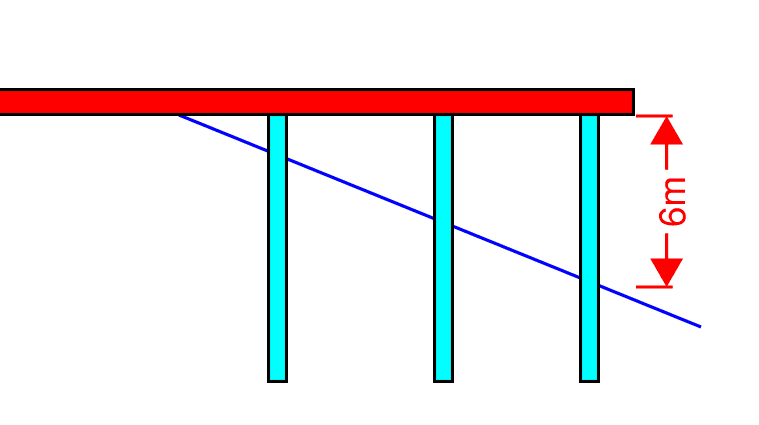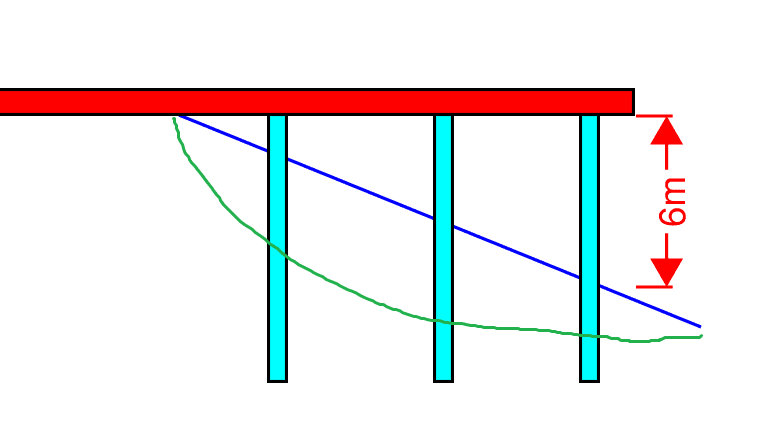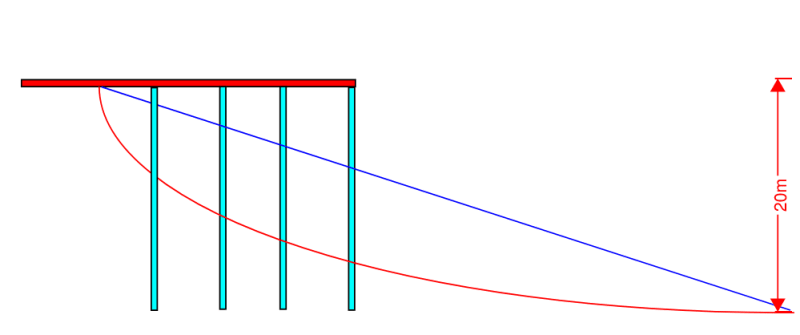deli001
Structural
- Jun 2, 2021
- 4
As shown below, I have this structure on a slope site (up to 6m height at the front). The cyan ones are the piers as columns to support concrete slab (shown as red) above.
My question is what is the effective length of piers/columns (6m or more than 6m to consider the restraints from soil)? I am going to design this structure as normal suspended structure using piers/columns to RC beams/slab on top as moment frames. If there any issues that I need to consider, like soil & water loss etc? Do I need to spray the slope site (shown as blue line) or anything? Do you have better options instead of using piers as columns?
Thank you.

My question is what is the effective length of piers/columns (6m or more than 6m to consider the restraints from soil)? I am going to design this structure as normal suspended structure using piers/columns to RC beams/slab on top as moment frames. If there any issues that I need to consider, like soil & water loss etc? Do I need to spray the slope site (shown as blue line) or anything? Do you have better options instead of using piers as columns?
Thank you.


![[idea] [idea] [idea]](/data/assets/smilies/idea.gif)

